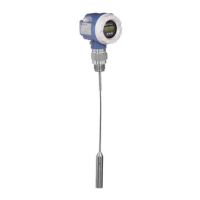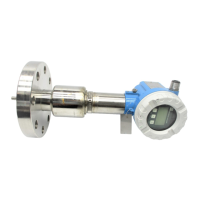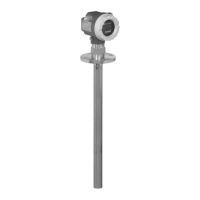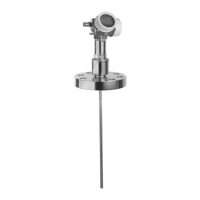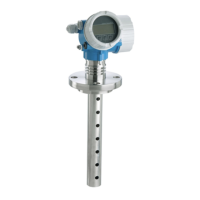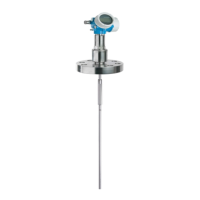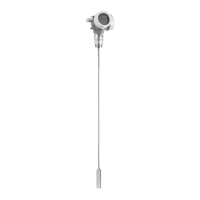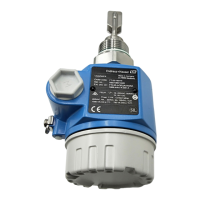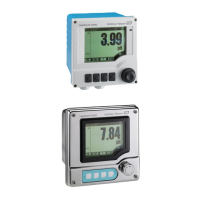Levelflex M FMP40
4 Endress+Hauser
Function and system design
Measuring principle The Levelflex is a "downward-looking" measuring system that functions according to the ToF method
(ToF = Time of Flight). The distance from the reference point (process connection of the measuring device,
→ ä 43) to the product surface is measured. High-frequency pulses are injected to a probe and led along the
probe. The pulses are reflected by the product surface, received by the electronic evaluation unit and converted
into level information. This method is also known as TDR (Time Domain Reflectometry).
L00-FMP4xxxx-15-00-00-en-002
Reference point of the measurement, details → ä 43
Dielectric constant
The dielectric constant (DC) of the medium has a direct impact on the degree of reflection of the high-
frequency pulses. In the case of large DC values, such as for water or ammonia, there is strong pulse reflection
while, with low DC values, such as for hydrocarbons, weak pulse reflection is experienced.
Input
The reflected pulses are transmitted from the probe to the electronics. There, a microprocessor analyzes the
signals and identifies the level echo which was generated by the reflection of the high-frequency pulses at the
product surface. This clear signal detection system benefits from over 30 years' experience with pulse time-of-
flight procedures that have been integrated into the development of the PulseMaster® software.
The distance "D" to the product surface is proportional to the time of flight t of the impulse:
D = c · t/2,
where c is the speed of light.
Based on the known empty distance "E", the level "L" is calculated:
L = E – D
Reference point for "E" see diagram above.
The Levelflex possesses functions for interference echo suppression that can be activated by the user.
They guarantee that interference echoes from e.g. internals and struts are not interpreted as level echoes.

